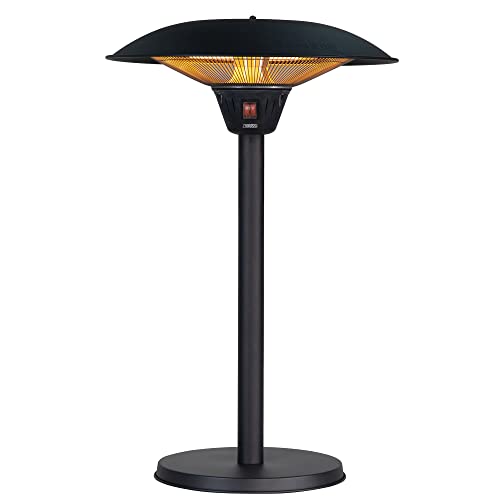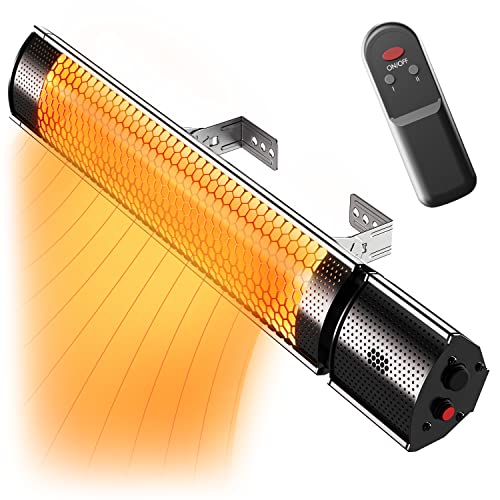Natural Gas Gas Patio Heater Techniques To Simplify Your Daily Lifethe…
페이지 정보

본문
 Natural Gas Patio Heater
Natural Gas Patio HeaterA natural gas patio heat is a great option for keeping outdoor spaces warm. Its main advantage is that it connects to existing natural gas (NG) lines, meaning that you do not have to worry about filling propane tanks.
However there are some factors to take into consideration before deciding on a. This article will discuss the various options, including heat output and safety, as well as installation.
Cost
Adding a natural gas buying patio gas heater will help you enjoy your outdoor area well into the night. These heaters can be wall-mounted, freestanding or anchored with a post to the ground. They come in several sizes to heat larger spaces. The ideal model should include features that make outdoor use safer and more convenient. For instance, you could choose a model that has an anti-slant feature that will shut off the burner if it is tilted more than 47 degrees. Certain models are also constructed of durable materials such as aluminum and stainless steel for durability and resistance to corrosion.
They are powered by propane, natural gas or electricity, and produce a maximum of 46,000 British thermal units (BTUs). Electric models plug directly into standard 120-volt outlets. They are the easiest and most user-friendly however they don't heat as well as natural gas or propane models.
Propane patio heaters are large and umbrella-like. They typically have hollow bases that hold tanks of propane that weigh 20 pounds, similar to the type you'd use for a gas grill. They are less expensive however they have to be refilled regularly and can't easily be moved. There are also smaller propane heaters that are tabletop designed to sit on top of tabletops and use propane tanks of 1 pound.
The cost of a natural gas patio heater is determined by its size and features, like wheels that allow for easy mobility as well as a quick ignition and remote that can be set to multiple settings. You can pick from a range of finishes to complement your outdoor decor, such as the hammered brass, resin wicker, and decorative stone facing.
Natural-gas-burning and electric patio heaters that are hardwired require an expert installation and cannot be moved as easily as propane or gas versions, but they have a more permanent appearance and function as an indoor space heater. There's even one with a stylish design that threads into gas lines with a rigid structure to add a stylish accent. The cost of a patio heater that runs on natural gas is generally more expensive than those powered by electricity or propane.
Heat Output
When shopping for a natural gas patio heater, pay special attention to the heat output. The amount of BTUs it produces is an indication of how warm the unit will make your guests feel, and also how long it will keep your porch or balcony cozy. The bigger the area you can heat, the more the BTUs.
If your outdoor space is covered or open, gas patio heaters can help you comfortably enjoy the outdoors year-round. Most models have adjustable heat settings and run on either natural gas or propane. They can be mounted on the ceiling or wall, or they can stand on their own. If you have limited area for flooring, you may want to look into a portable natural gas patio heater on wheels powered by propane tanks. Look for features like a gas shutoff to prevent leaks in the event of a fire going out, or an anti-tilt feature that stops the supply of fuel automatically when the unit tilts over 47 degrees.
The best natural gas patio heaters can provide plenty of warmth to your deck or in your backyard without taking up too much space. The large models that are freestanding, which are reminiscent of floor lamps, provide radiant heat to a larger area and are constructed from sturdy metal. Tabletop models that have a smaller footprint are great for smaller dining spaces. There are models that run on natural gas or propane, and are available in a variety of appealing finishes.
For a more upscale look, there are patio heaters that utilize natural gas or propane, and have the hammered-bronze, resin-wicker, or decorative stone front. You should look for features like a push-button starter and a safety valve which automatically shuts off when the unit is tipped over, as well as the ability to use rotary dials to adjust and set the flame. The best gas patio heater propane patio heaters are crafted using stainless steel to ensure durability and strength and others are constructed of aluminum to make them lighter in weight.
Safety
Gas patio heaters are a common way to increase the amount of time you spend outdoors. They come in a variety of styles, from freestanding models that contain a propane tank to ones that are connected to your home's natural gas line. The style you pick will depend on your budget and how much you're looking to heat your space.
Propane-fueled heaters are typically mounted on a pole or stand that has an reflector dome or shield and a base that is able to hold the 20-pound propane (LP) tank. These heaters are available in a variety of power outputs, ranging from 41,000 BTUs to over 100,000. These heaters come with safety features such as an automatic shut-off valve, and an electronic lighter that allow easy ignition. They also include a tip-over switch which automatically shuts off the flow of gas if the unit tip over.
Portable LP patio heaters are only to be used outdoors on flat, noncombustible and non-slip surfaces. They should be kept at a minimum of three feet from any combustible object and at a minimum of 12 inches away from anything that could catch fire, such as fences and trees. The fuel cylinder should be stored outside and at least three feet away from any windows, stairways, building and doors. Examine the hose and connection points of a propane patio heater for leaks regularly. You can test these connections by using the use of a soapy water solution. Check for the UL or CSA mark on the propane patio heater to ensure it is in compliance with national safety standards.
A natural gas gas patio heater connects to the natural gas line in your home and provides more BTU than propane heaters. It's more expensive to run, however it is safer and doesn't require an additional propane tank. These units are perfect for patios in residential homes as well as restaurants, apartment and condominium buildings.
No matter what style of patio heaters you select, make sure they are rated for outdoor or indoor use. Natural gas and propane patio heaters could release carbon monoxide when they are used indoors in an enclosed space, and this could be fatal. Electric patio heaters on the contrary, do not emit any pollutant and can be used in a closed area.
Installation
Natural gas patio heaters are connected to your home's gas line. They don't need tanks of propane like other kinds of outdoor heating. This makes them a much more convenient and safer option than traditional propane heaters. Additionally, they don't emit more smoke than propane heaters emit. They require professional installation, and are more expensive than propane heaters.
They are a common addition to both commercial and residential properties. They can keep your patio more comfortable even if temperatures dip below freezing. They are safe to use as they don't release heat onto the surface, but rather radiate heat through the inside of the silvered cover. These heaters are very energy efficient as they don't consume a lot of electricity.
Patio heaters are available in two varieties that are wall-mounted and freestanding. If they are wall-mounted, the heaters must be at minimum 8 feet from the ground so that people do not get in the way of the heat radiating from them. Freestanding heaters require minimum clearance of 14 feet in order to avoid combustible materials in the area.
They come with safety features that safeguard people and property in the event of an issue. For instance, the majority of them come with a tilt shut-off valve that causes the heater to stop using energy (whether it is fuel or electricity) when it happens to tilt or fall over. They also have a flame sensor which detects the presence of flames to avoid accidental ignition.
In order to ensure that the gas heaters are safe for use and safe for use, a licensed plumber must be hired to install them. They should be acquainted with local and state plumbing and heating codes to ensure that the gas lines are properly designed to accommodate the heaters. They should also be certified to inspect gas appliances for leaks.
 Other costs could be added to the labor and materials costs of the installation of a gas patio heater. This includes removing, replacing, or repairing any damaged or damaged finishes or structures. These costs include framing and surface finishes as well as plumbing systems. These costs could also comprise upgrading existing systems to meet current building codes. These costs should be included in the total estimate for the job.
Other costs could be added to the labor and materials costs of the installation of a gas patio heater. This includes removing, replacing, or repairing any damaged or damaged finishes or structures. These costs include framing and surface finishes as well as plumbing systems. These costs could also comprise upgrading existing systems to meet current building codes. These costs should be included in the total estimate for the job.- 이전글Cialis 5 mg ob102 24.10.22
- 다음글Guide To Gas Heater For Outdoor Patio: The Intermediate Guide For Gas Heater For Outdoor Patio 24.10.22
댓글목록
등록된 댓글이 없습니다.


